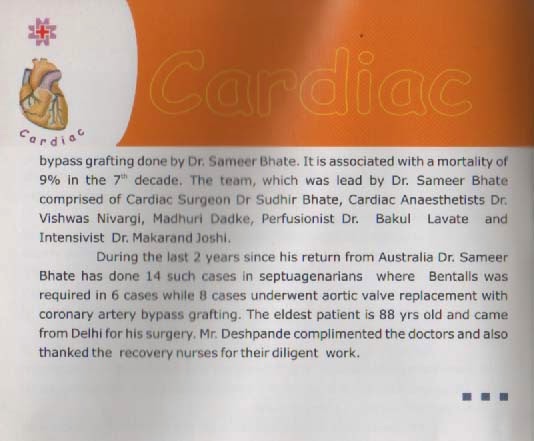Monday, August 24, 2015
Manman Reamers
-Mr. Madhukar Gokhale
A drill cannot be relied upon to produce a hole having sufficiently good quality of finish and accuracy for many purposes, and so, when accurate holes are required a reamer must be used for finishing to the size.
The reamer does not originate a hole in the same way as drills do, but imparts the necessary smoothness, parallelism, roundness and accuracy in size to the previously drilled hole.
Reaming will however not correct any errors which may be in the drilled hole regarding its position or direction because reamer merely follows previously drilled hole.
We are manufacturing flexible reamers for last many years, off course, this development is in consultation with senior Ortho surgeons. Initially, I manufactured reamers using wires but these reamers failed because of unwinding of wires. Then I tried reamers with flat strips. We have taken care that reamers will not unwind on changing the direction.
We are providing guide wires with ball tips and without tips. The guide wires are provided with a flat surface for taking hold for withdrawal. We are also providing transfer tubes for guide wires. To start, you must first use fixed head reamer. Because it has a starting taper, it automatically aligns with the center at the hole.
You should use reamers advancing in steps of 0.5mm. We have manufactured reamers from 8mm ø to 15mm ø. Clean the reamers frequently, remove bone debris from the reamer flutes. Do not use blunt reamers. Always use high-torque low RPM power source. We manufacture 400 RPM reaming hand pieces; and 200 RPM also can also be provided on request.
Wednesday, February 18, 2015
BASIC ENGINEERING SKILL
FOR SURGEON
PART-1
Madhukar Gokhale - mgg@manmanindia.com
Since last many years I am working with you. I thought that I must bring some small things to your notice. Recently, one of my team members was in an Operation Theater. He was servicing the drill hand piece. The drill bit was in the chuck only. He was surprised to see that the bit was completely blunt. He asked the theater assistant to replace it. The assistant brought a bunch of drill bits in a tray along with other parts. He picked up a drill bit to replace it but that was also blunt.
This incident made me realize that nobody cares about sharpening the bits. The drills are required to be sharpened at intervals. Every time, before use, you must insist about this.
Here’s a brief information about sharpening of the drill bits. I feel you must care for drill point that will facilitate the drilling.
The following sectional views shows the effect of errors in drill grinding. In the first sketch, it shows how the perfect drilled hole is possible and the next how not!
Please see the above figure. They are self explanatory. They show the geometry of drill sharpening. The cutting angle depends on the hardness of the surface to be drilled. For hard surface like metal, its 118 degree but for bone it should be less. For very soft material it should be even lesser (i.e Sharp).
In fig. A, side view of a twist drill is shown. The metal behind cutting edge AB the correct angle for slope is 12 degree.
In fig. B, a sketch is shown at looking level with the cutting edge AB, and it will be seen that the effect of the twist formation of the drill (AC) is to give cutting rake.
In fig. C ,when properly ground, drill point should be central and the lip angles equal. The metal behind the lip should be as in fig. A and the line across center of the web should be as shown in fig. D
In fig. E, for checking the grinding of the drill point a simple gauge is shown.
In fig. F, for drilling large holes, feeding pressure can be reduced and the drill maybe made to cut faster by first drilling a small ‘lead hole’, as shown.
NOTE :
When drilling deep holes, release feed occasionally and withdraw the drill. Remove chips from bottom of the hole.
If you want to check the straightness of the drill bit, just roll it on a flat surface. If you see the movement awkward it is not straight.
*********
Friday, October 31, 2014
Sunday, August 24, 2014
Thursday, August 21, 2014
Tuesday, August 12, 2014
Subscribe to:
Comments (Atom)














%2BIlizarov.jpg)































